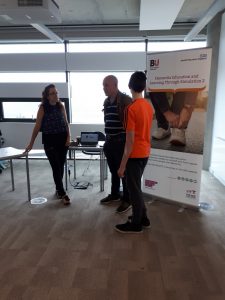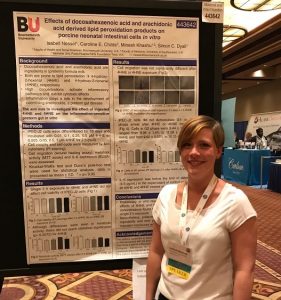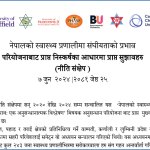A busy week for publications this week, while the government have been busy with Brexit votes and there is a positive story about immigration rules.
The Economics of HE
Commons Public Accounts Committee – The Commons public accounts committee published its report on the higher education market on Friday. After some interesting evidence sessions, Research Professional report that the outcome is disappointing:
- “Rather than providing an analysis of the problem and proposed solutions as we saw in the Lords economic affairs committee’s report [see below], the PAC report takes the form of an exam question and moves rapidly—after two pages—to conclusions and recommendations. The recommendations mostly involve asking the Department for Education to return to the committee.
- Those who work in universities will be familiar with complaints from students about the lack of detailed feedback they receive after going to all the effort of submitting a considered piece of work. The PAC might want to reflect on whether this report is an adequate response given the public concern over whether the fees and loans system is fair on students….
- It’s all a bit vague, which is terribly disappointing given the very good evidence the committee received in this area. The recommendation is formulaic and is drawn in a broad way that lets the department off the hook. It will be quite easy to provide evidence of how the department is putting pressure on universities.”
The conclusions and recommendations are here. No new news – please define the market, set up an evaluation framework for careers (a CEF?), evidence of success in WP and put pressure on providers, guidance to help students to change institution and a performance framework for the OfS (OfSEF?).
- The Department treats the higher education sector as a market, but it is not a market that is working in the interests of students or taxpayers. There is greater competition for students between higher education providers, but no evidence that this will improve the quality of the education they provide. Higher education providers have increased their marketing budgets in order to attract students rather than compete by charging different tuition fees. However, the amount of funding for higher education (primarily via tuition fees) has increased by 50% since 2007/08. It is therefore critical that the higher education market is delivering value for money, both for individual students and the taxpayer. The new sector regulator, the OfS, has a primary objective that students “receive value for money”. But neither the OfS nor the Department has articulated well enough what value for money means in higher education, or how they will seek to monitor and improve it.
Recommendation: The Department should write to the committee by October 2018 to explain what it expects a successful higher education market to look like.
- Young people are not being properly supported in making decisions on higher education, due in large part to insufficient and inconsistent careers advice. The substantial financial commitment required and wide variation in outcomes from higher education mean prospective students need high-quality advice and support to make decisions that are right for them. The complexity of the market and the volume of information available makes it difficult for prospective students, most of whom are teenagers, to assess the quality and suitability of higher education institutions, raising questions over whether student choice alone will drive up the quality of provision. A wide range of other factors influence students’ decisions, such as marketing by higher education providers, the reputation of institutions and their perceived prestige, a student’s family background, as well as the location and costs of travel and accommodation. High-quality, impartial careers advice is critically important, but the support available to students in schools is not good enough. The Department acknowledged that it needs to improve the quality of careers advice for young people. It told us that its Careers Strategy, published in December 2017, will have a “real impact” on young people’s lives and help students make choices which best fit their own aptitude, skills and preferences, but it is not clear how or whether the department will ensure high quality careers advice at school level. It is too early to judge its success, but action is needed quickly and the strategy should be robustly evaluated to ensure it is achieving its aims.
Recommendation: The Department should write to the Committee by October 2018 with details of progress it has made with its careers strategy and the impact it is having. It should set up an evaluation framework to enable it to assess progress.
- The Department does not have enough of a grip on actions to widen participation in higher education, and is over-reliant on the actions of some universities. The Department’s reforms are designed in part to ensure equal access to higher education, regardless of a student’s background. However, students from disadvantaged backgrounds are still far less likely to enter into higher education than those from more advantaged backgrounds. There have also been substantial drops in part-time and lifelong learning, which are critical to social mobility. The Department told us that it has introduced a Social Mobility Action Plan to address inequalities across the education system, and one of the roles of the OfS will be to ensure best practice in reaching out to students from disadvantaged background is being applied across the higher education sector. However, we are concerned that the incentives in the higher education market do not sufficiently support widening participation. Outreach activities are primarily conducted by universities and while there are areas of good practice, some universities who find it easy to recruit students are not pulling their weight. The OfS told us that each higher education provider will set targets for widening participation and improving outcomes for disadvantaged groups, and it will oversee these Access and Participation Plans, which will be a condition of registration. But it remains to be seen whether the plans to improve performance will have an impact on the life chances for disadvantaged groups.
Recommendation: The Department should provide us with evidence of how it is widening participation and opening higher education to students from disadvantaged backgrounds. The Department should demonstrate how they will maintain pressure on providers to measure success.
- Students have limited means of redress if they are unhappy with the quality of their course, even if they drop out. The relationship between students and higher education institutions has changed substantially since tuition fees were introduced, with a much greater emphasis on whether a course or institution offers value for money. An effective market requires empowered consumers who can switch provider if they are dissatisfied, but this is not the case in the higher education market. Across the sector, only 2% of students transfer provider each year, and students are more likely to drop-out altogether if they are dissatisfied with their course rather than switch provider. When students do switch providers or drop out, they are unlikely to get any of their fees back unless they can demonstrate that they were misled in some way. The OfS will require universities to demonstrate what arrangements they have in place for facilitating transfers, and it will have a responsibility to make sure there is better use of transfers where appropriate. However, given the relative weakness of students as consumers, it is vital that the OfS uses its full powers actively, and works effectively with other regulators, such as the Advertising Standards Authority and the Competition and Markets Authority, to ensure the market functions in the interests of students.
Recommendation: In developing the new regulatory framework, the Department and OfS must ensure students’ interests are protected. The OfS should include clear guidelines to enable students to shift courses or institutions more easily.
- The new Office for Students has not yet articulated how it will support the varied and complex interests of students. It told us that, as the sector regulator, its role is to regulate universities and colleges “on behalf of students”. However, it is clear that these interests are varied, complex and often competing. The OfS told us that it has established a student panel, although it has chosen not to work with the National Union of Students, to inform how it makes decisions and to ensure that its definition of the student interest is defined by students themselves. It also told us that it plans to develop a student engagement strategy to clarify what the interests of students are so that it can feed these into its regulatory framework, which would include quality of teaching, feedback and graduate outcomes as key areas of focus. But until the OfS has sufficient clarity over what it is trying to achieve in the interests of students, it will not be able to effectively monitor and evaluate the success of its regulatory approach.
Recommendation: The Office for Students should report back in six months to set out in detail how it will measure and report on its performance in regulating for students, and be clear about what its priorities are in protecting student interests.
The summary of the summary is this bit: “We spoke to the Office for Students at its inception and hope that it will set a clear marker that it really is acting in the interests of students from day one. It is still unclear how it will gauge the real concerns of students and ensure that institutions are delivering and sanctioned when they let students down.”
House of Lords Economic Affairs Committee – The House of Lords Economic Affairs Committee’s inquiry into the Economics of higher, further and technical education inquiry has reported. They find that the system of post-school education in England is unbalanced with too much emphasis on full time university degrees, and as a result offers poor value for money to individuals, taxpayers and the economy – and they stress the need for immediate reform. As an official Committee the Government are expected to take note of, and respond to, the report – although it’s not binding on the Government. The current HE Review will certainly include these findings within its deliberations. There is a short summary pamphlet issued by the Committee here.
The report notes that undergraduate HE studies dominate post-school choices. They attribute this to the HE Finance system making it an easy option, alongside the lack of alternative viable, consistent and quality alternatives. The report notes this is not in the country’s best interest.
The key recommendations are:
- Other post-school options need more funding – Funding for post-school education is too heavily skewed towards degrees. Public funding across all forms and institutions in higher and further education should be better distributed. There should be a single regulator for all higher education (Level 4 and above – the Office for Students is noted) and a single regulator for other post-school education (Level 3 and below).
- Reversing the decline of part-time and flexible learning – The decline in part-time learning in higher education is a result of restrictions around accessing loans for students who already have a degree, the increase in tuition fees in 2012 and the lack of maintenance support for part-time students (which will be available from 2018/19). Funding restrictions have also led to a decline in part-time study in further education. A credit-based system whereby people can learn in a more modular way and at their own pace should be introduced.
- Apprenticeships – The Government’s target of three million apprenticeships has prioritised quantity over quality, and should be scrapped. The Government must renew its vision for apprenticeships, concentrating on the skills and choices that employers and individuals really need. The Institute for Apprenticeships should be abolished and replaced with a new regulator for Level 3 and below qualifications, and the Office for Students should take responsibility for those at Level 4 and above.
- Reforms to student loans and widening maintenance support – The Government claims the high level of interest charged on student loans makes the system progressive, but it is middle-earning graduates who end up paying back most in real terms. The interest rate should be reduced to the 10-year gilt rate, currently 1.5 per cent, from the current rate of RPI plus 3 per cent.
Lord Forsyth of Drumlean, Chair of the Economic Affairs Committee, said:
- “The way we expect students to access higher and further education is deeply unfair. We must create a single system, including apprenticeships, that offers more choice and better value for money.
- Maintenance support should be available for all students studying at Level 4 and above. The means-tested system of loans and grants that existed before 2016 should be re-instated, and total support increased to reflect the true cost of living.
- We recommend that the interest rate charged on post-2012 student loans should be reduced to the level of the ten-year gilt rate. This would mean reducing the interest rate from around about 6 per cent today, to 1.5 per cent. No student should incur interest while studying.”
The report also noted:
- The statistical claims made by the Government about the relationship between higher education and economic growth are oversimplified. Whatever relationship may or may not have existed in the past, the assumption that sending increasing numbers of today’s young people to university to study undergraduate degrees is the best option for individuals and the economy is questionable. The evidence suggests that there is a mismatch between the qualifications and skills provided by the higher education system and the needs of the labour market. A substantial proportion of current graduates may have been better off pursuing other higher education qualifications in areas where there are skills shortages.
- The aim of the 2012 reforms to create an effective market amongst universities has not been achieved, as evidenced by the lack of price competition. We have seen little evidence to suggest that the higher education sector is suitable or amenable to market regulation. We are concerned that the replacement of nearly all grant funding by tuition fees, coupled with the removal of the cap on student numbers, has incentivised universities to attract prospective students onto full-time undergraduate degrees. This may also explain the striking increase in grade inflation.
- The combination of incentives to offer and study for undergraduate degrees has had a negative effect on the provision and demand for other types of higher education.
- The Teaching Excellence Framework will not impose sufficient discipline on the sector to ensure the quality of the ever-increasing provision of undergraduate degrees. The framework is based on metrics which are too general to relay much information about the quality of an institution or course and are too dependent on unreliable surveys. Risk is borne almost entirely by students and taxpayers rather than the institutions.
With this in mind, there was a parliamentary question on TEF this week:
Q – Gordon Marsden: T what external organisations he plans to consult to take forward his Department’s commitment to appoint an independent reviewer of the teaching excellence framework and its criteria of operation.
A – Sam Gyimah: My right hon. Friend, the Secretary of State for Education will appoint a suitable independent person for the purpose of preparing a report on the operation of the Teaching Excellence and Student Outcomes Framework (TEF), in accordance with the Higher Education and Reform Act 2017. In taking decisions about the TEF, he will take account of advice from partners in the higher education sector. That includes the department’s TEF Delivery Group, which is comprised of representative organisations from the sector plus the Office for Students and the devolved administrations, and gives advice on the design and development of the TEF.
Wonkhe have an analysis of TEF year 3 grade inflation data:
- “Every institution where data is presented showed evidence of grade inflation [Ed: or just improvement in outcomes?] when comparing the most recent year of first class awards with the supplied historical comparator, in some cases up to a 20 percentage point difference. Most institutions also showed a steady increase over the most recent three years, all of which were substantially above the earlier figure.
- Every institution showed a rise in the number of first class degrees, and a fall in the number of 2:2, third class or other honours degrees.
- What doesn’t the data tell us? Resits, basically. We don’t know to what extent degree candidates are simply not accepting lower awards, and instead choosing to resit elements of their course to achieve a higher award. We also do not know to what extent institutions are encouraging this – in light of the continued idiocy of certain parts of the rankings industry in including “percentage of first class degrees” in league tables, or in the light of student care (and a weather eye on DLHE metrics).
- The simple proportions are also less reliable for smaller institutions, where you would expect to see a greater fluctuation year on year and cohort by cohort. And we don’t (yet – this may come in future years when the data is derived centrally from HESA) get any splits – of particular interest here would be prior qualifications, but we already know that various student attributes are a good predictor of final grade.”
And the BBC has cut last week’s IFS data and has an interactive tool – adding “But remember, there’s more to life than money…” and the all-important qualifier: “Earnings for different professions may vary over time. The figures are based on students graduating between 2008 and 2012.” Read last week’s policy update for some critical perspectives on the relevance of this data for current applicants. Past performance is not really a guide to future performance – and some graduates may end up doing a different job to the rest of the cohort….
Research funding
There were two Parliamentary questions about research funding, one in the context of Brexit
Q – Kemi Badenoch: To ask the Secretary of State for Business, Energy and Industrial Strategy, what steps his Department is taking to ensure the maintenance of funding for (a) universities and (b) research projects after the UK ceases to receive European Research Council funding.
A – Sam Gyimah:
- The UK is eligible to fully participate in all aspects of the Horizon 2020 programme, including the European Research Council (ERC) while we remain a member of the EU. The Joint Report, reflected in the draft Withdrawal Agreement, envisages that UK entities’ right to participate will remain unaffected by the UK’s withdrawal from the EU for the duration of the programme and the lifetime of projects funded under Horizon 2020.
- If necessary, the Government’s underwrite remains in place. This guarantees the funding for UK participants in projects ongoing at the point of exit, as well as any successful bids submitted before the UK leaves the EU.
- As part of our future partnership with the EU, the UK will look to establish a far reaching science and innovation pact. The UK would like the option to fully associate to the excellence-based European research and innovation programmes, including Horizon Europe, the successor to Horizon 2020. The UK intends to play a full and constructive role in shaping these proposals and we look forward to discussing the detail of any future UK participation with the Commission.
Q – Rebecca Long Bailey: When the Secretary of State for Business, Energy and Industrial Strategy plans to publish a roadmap for meeting his target of increasing investment in R&D to 2.4 per cent of GDP by 2027.
A – Sam Gyimah: Since the publication of the Industrial Strategy, we have been speaking to businesses, academics and other stakeholders to develop the roadmap. Through this engagement we are exploring the barriers to increased R&D investment by business, the greatest opportunities for R&D growth over the next decade, and the key policies Government should prioritise to reach the 2.4% goal and deliver economic and societal impact.
Immigration & International Students
EU Students – This week both Layla Moran (Lb Dem Education Spokesperson) and Universities UK have been pressurising the Government to clarify the fee status of EU students for the 2019/20 academic year, warning of a further drop in EU numbers. The Scottish Government confirmed the fee status for EU students in February this year.
Alistair Jarvis, Chief Executive of Universities UK, said: “Students from across the EU, who bring great economic and academic value, are already enquiring about 2019 study, but face uncertainty on the expected financial costs of doing so. We know from research that the majority of international students start their research about studying abroad more than 12 months in advance of actual enrolment…there is now an urgent need for clarification to be provided across all parts of the UK. It is critical that action is taken to prevent a drop in EU applications next year.”
Non-EU Doctors and Nurses – Immigration Relaxation – The Government have announced a relaxation on the Tier 2 visa cap which currently limits immigration of non-EU skilled workers to 20,700 per year (see Politics Home) to ensure that non-EU doctors and nurses will be outside of the cap.
The Telegraph reported that a much wider review is expected: “businesses and employers will be able to recruit an extra 8,000 skilled migrants a year from other professions including IT experts, engineers and teachers, effectively increasing the cap by 40 per cent.”
Changes to the immigration rules were announced on Friday that come into force on 6th July that do not seem to go that far:
- increasing the number of countries that benefit from a streamlined Tier 4 student visa application process – 11 additional countries including China have been added
- leave to remain for children under the Dubs amendment – including study and healthcare for children who do not qualify for refugee or humanitarian protection leave
- changes applying to Afghan interpreters and their families that were announced recently
- the change relating to non-EU doctors and nurses who will no longer be in the Tier 2 visa numbers cap
- including fashion designers and TV and film professionals in the exceptional talent visa
Opposition to Theresa May’s immigration policies, including whether international students should be included in the overall net immigration target, has been widely reported in the press over the last couple of years, including a lack of support for the current approach from Cabinet members. The change in relation to the NHS may be the start of something bigger. The promised Immigration White Paper was postponed due to the Migration Advisory Committee’s (MAC) investigations into workers within the UK labour market and the impact of international/EU students (due to report in September). Meanwhile there have been pressing calls from the sector (notably from HEPI following the publication of their research into benefits of international students) for the MAC Committee to report ahead of September.
The Immigration White Paper is now rumoured to be scheduled for release in July, to allow for consultation prior to the European Council leaders’ summit on the 18 and 19 October (the target date to agree a withdrawal treaty). The Immigration Bill is expected to be presented to Parliament before 2019.
‘Start up’ Visas – The Home Secretary has announced that people who want to start a business in the UK will be able to apply for a new “start-up” visa from Spring 2019. This is aimed to widen the applicant pool of talented entrepreneurs and make the visa process faster and smoother for entrepreneurs coming to the UK. It will replace the previous visa for graduates, opening it up to a wider pool of talented business founders. It will require applicants to have acquired an endorsement from a university or approved business sponsor, including accelerators.
The Home Secretary, Sajid Javid, said:
- “The UK can be proud that we are a leading nation when it comes to tech and innovation, but we want to do more to attract businesses to the UK and our migration system plays a key part in that.
- That’s why I am pleased to announce a new visa for people wanting to start a business in the UK. This will help to ensure we continue to attract the best global talent and maintain the UK’s position as a world-leading destination for innovation and entrepreneurs.
- This initiative builds on other recent reforms to the visa system – including doubling the number of visas available on the Exceptional Talent route to 2,000 per year – and shows the government’s commitment to making the UK a dynamic, open, globally-trading nation.”
International Students – During an American Senate hearing the US confirmed they will limit the study visa of Chinese students studying in ‘sensitive’ fields (robotics, aviation, high-tech manufacturing) to a one year duration with an option to renew and extend study into subsequent years after consideration. The hearing, Student Visa Integrity: Protecting Educational Opportunity and National Security, (originally titled ‘A Thousand Talents: China’s Campaign to Infiltrate and Exploit US Academia’). A spokesperson from the Office of the Director of National Intelligence stated the policy decision was not driven by race or ethnicity but by the need to safeguard American Intellectual Property in the face of “the fact that China has a publicly-stated policy goal of acquiring sensitive information in technology around the world …that they seek access and recruit global experts regardless of their nationality to meet their science and technology aims.” In opposition to the visa limitations testimony was given on the value of international students at the hearing. What is most interesting is the difference in attitude between the US and UK in the consideration of the benefits of an international student population that the hearing revealed.
In the UK international students are welcomed for the diversity they bring, the further invigoration and internationalisation of the curriculum, the income boost through tuition fees, the levels of postgraduate students, and the significant economic ‘side effects’ benefiting the geographical community (see HEPI). There is also an assumption that (due to the visa system) most international students will return home, having originally chosen to study here to enhance their own international career standing or bring fresh skills back to their own community (a personal motivation).
Yet the opinion expressed in the American Senate hearing was that the international students should be contributing to American society (and paying for the privilege of doing so): “Most students and visiting scholars come to US for legitimate reasons. They are here to… contribute their talents to [the US].” Senator Cornyn (Chair of the hearing). Most likely American academia would have alternative viewpoints to Senator Cornyn on the valuing of international students. Also this appears to be a niche policy decision to infuse intellectual property security concerns into the visa approval process rather than a blanket policy.
Britain and America are two of the major world players in attracting international students and both now have elements of unwelcome emanating through policy decision. It’s notable that Chinese student numbers are the biggest international group to access UK universities; in 2015/16 1 in 4 international originated from China..
Widening Participation and Achievement
There were several parliamentary questions within the widening participation sphere this week.
Part Time Students – Q – Richard Burden: To ask the Secretary of State for Education, what assessment he has made of the effect of changes to higher education funding on student numbers at the Open University in each year since 2011.
A – Sam Gyimah:
- The government recognises the decline in part-time study within the sector, and is aware of the impact this has had on the Open University. That’s why the government is committed to supporting part time students and since 2012, it has paid the tuition fees of students studying on part-time courses up-front through a system of subsidised fee loans.
- In addition, new part-time students attending degree level courses from August 2018 onwards will, for the first time, be able to apply for up-front loans to help them with their living costs. Subject to the development of a robust control regime, these loans will be extended to students on distance learning courses from August 2019.
- The government continues, through the Office for Students (previously Higher Education Funding Council for England), to provide direct grant funding to support successful outcomes for part-time students. This was worth £72 million in the current academic year (2017/18), and the Open University received a sizeable amount of this funding.
- This funding reflects the particular costs associated with recruiting and retaining part-time students and includes funds to support successful outcomes for part-time students. The Open University received £48 million to support teaching activity in 2017/18.
Effective Deployment of WP – Q – David Lammy: To ask the Secretary of State for Education, what steps he is taking to ensure that the widening participation funding is deployed effectively. And Q – David Lammy: To ask the Secretary of State for Education, what steps he is taking to increase the proportion of young people from disadvantaged backgrounds attending university.
The following response covered both questions: A – Sam Gyimah:
- Widening participation in higher education remains a priority for this government. We want everyone with the potential to have the opportunity to benefit from a university education, regardless of background or where they grew up.
- University application rates for 18 year olds to full-time study remain at record levels. The proportion of disadvantaged 18 year olds entering full time higher education has increased from 13.6 per cent in 2009 to 20.4 per cent in 2017. Building on this our major review of post-18 education and funding will consider how disadvantaged students receive maintenance support both from government and from universities and colleges and how we can ensure they have equal opportunities to progress and succeed in all forms of post-18 education.
- We have set up the Office for Students (OfS) with powers to drive forward improvements in access and participation and we have asked the OfS to do more to maximise the impact of spending in this area. In their business plan the OfS plans to evaluate the return on investment on access and participation. We have also asked the OfS to set up an Evidence and Impact Exchange to improve the impact and value for money of providers’ access and participation expenditure.
- In addition, through the Higher Education and Research Act 2017, we have introduced the Transparency Duty requiring registered higher education providers to publish data on application, offer, acceptance, dropout and attainment rates of students by ethnicity, gender and socio-economic background. This will hold the sector to account for their record on access and retention of students from lower socio-economic backgrounds and shine a light on where they need to go further
Targeted Outreach – Q – Gordon Marsden: To ask the Secretary of State for Education, what discussions he has had with (a) the Director for Fair Access and Participation and (b) the Office for Students on strengthening university programmes aimed at potential applicants between the ages of 11 and 16 from disadvantaged black, working-class white and other communities. And Q – Gordon Marsden: what discussions he has had with universities and their representative bodies on extending their outreach activities for disadvantaged groups of young people between the ages of 11 and 16.
A – Sam Gyimah:
- In our first guidance to the Office for Students (OfS) we have asked them to challenge higher education (HE) providers to drive more progress through their Access and Participation Plans. Prior attainment is a critical factor in entering higher education and we are asking providers to take on a more direct role in raising attainment in schools as part of their outreach activity. The OfS have also established the National Collaborative Outreach Programme to target areas where progression into higher education is low overall and lower than expected given typical GCSE attainment rates.
- Through the Higher Education and Research Act, we have introduced a Transparency Duty requiring higher education providers to publish data on application, offer, acceptance, dropout and attainment rates of students by ethnicity, gender and socio-economic background. This will hold the sector to account for their record on access and retention of students from lower socio-economic backgrounds and shine a light on where they need to go further.
- Officials and I are in regular contact with the OfS, including the Director for Fair Access and Participation, and the higher education sector to discuss issues around widening access.
Disabled Applicants – Q – Gordon Marsden: To ask the Secretary of State for Education, what discussions he has had with the Office for Students on encouraging university applications from potential applicants with disabilities.
A – Sam Gyimah:
- Widening access to higher education among under-represented or disadvantaged groups is a priority for this government. In our first guidance to the Office for Students we have asked them to ensure that higher education providers include, within their access and participation plans, those students that have been identified as requiring the most support. This includes students with disabilities.
- Higher education providers have clear responsibilities under the Equality Act 2010 to support their students, including those with disabilities
- Through access agreements – in future known as access and participation plans – higher education providers expect to spend more than £860 million in 2018/19 on measures to improve access and student success for those from disadvantaged backgrounds. This is a significant increase from £404 million in 2009.
Change in turbulent times
HEPI released Policy Note 7 – Change is coming: how universities can navigate through turbulent political times. It focussed on three key drivers for Universities: internationalisation, the impact of disruptive technologies, and changes to education delivery – the power not only to change the way we teach and learn, but also how we manage information and collect data.
“Rebooting learning for the digital age? As shown by HEPI report 93, improvements across the world in technology have already led to improved retention rates and lower costs:
- in the US, technology-enhanced learning has produced better student outcomes in 72 per cent of projects and average savings of 31 per cent;
- in the University of New England in Australia, student drop-out rates have reduced from 18 per cent to 12 per cent via learning analytics; and
- at Nottingham Trent University, 81 per cent of first year students increased their study time after seeing their own engagement data “
“Demand for higher education to 2030 As HEPI report 105 uncovers, universities in England should be preparing themselves to take on at least 300,000 additional full-time undergraduate places by the end of the next decade. This is good news in the long-term but the scale of the transformation that is required now – in terms of increasing capacity – is substantial.
Many universities are already concentrating on the long-term picture. This is best shown by the improvements to university estates. Yet, with a smaller pool of prospective students being relied upon to fill these resources in the short-term, we can expect competition between institutions to increase sharply over the coming years – particularly if it becomes more common for students to switch providers of higher education mid-course under the new regularly landscape of the Office for Students (OfS).”
To steer effectively through the troubled waters the policy note suggests:
“On the one hand, this involves coming together to:
- learn from each other’s experiences in the global context;
- identify common challenges;
- develop appropriate fixes; and
- present a collective voice in the sector against current political sentiment.
On the other hand, this also involves enhancing the distinctiveness of higher education institutions to:
- ensure they make a real difference on the ground in other parts of the world;
- ensure challenges specific to different institutions do not get lost in the general policy debate;
- develop appropriate strategies for success; and
- get ahead in an environment of increased competition.
Coming together in unity to learn from one another and develop appropriate strategies, while still maintaining the diversity that is unique to UK higher education, is what will help universities to overcome some of the biggest emerging policy challenges of our time – posed by the pressures of internationalisation, advancements in technology and domestic political developments. Universities today ultimately have two obligations on their hands – the first, to ensure their own individual successes and, the second, to preserve their part in a healthy, wider higher education sector, complete with variety and choice, for generations to come.”
Student experience – what students really want and why it matters
BU hosted Dr Diana Beech from the Higher Education Policy Institute on Wednesday morning for a policy breakfast, part of this year’s CELebrate symposium. In a packed room and despite the early start, we had a great discussion about student perceptions, value (and value for money). You can read about it and find links to the survey, her slides and other HEPI reports referred to elsewhere on the research blog here.
Student loans – the numbers
The Student Loans Company have published their statistics for England for the financial year 2017-18.
- The amount lent in financial year 2017-18 to Higher Education borrowers was £15.0billion, an increase of 11.9% when compared with 2016-17. A total of £222.3m was lent to Further Education borrowers.
- The amount lent in financial year 2017-18 for Postgraduate Masters was £582.9million.
- Net repayments posted to customer accounts within Higher Education amounted to £2.3billion in the financial year 2017-18, an increase of 16.0% compared with 2016-17 (including £399.2million in voluntary repayments).
- The balance outstanding for Higher Education (including loans not yet due for repayment) at the end of the financial year 2017-18 was £104.6billion,an increase of 17.0% when compared with 2016-17.
- With the entry of the Higher Education 2018 repayment cohort into repayment in April 2018, there were 3.8 million borrowers liable for repayment and still owing (an increase of 4% compared to April 2017). There were a further 1.2 million borrowers not yet liable for repayment bringing the total still owing to 5.0 million.
- The average Loan Balance for the Higher Education 2018 repayment cohort on entry to repayment was £34,800. This is a £2,380 increase on the previous year average of £32,420.
- 880,400 (18.6%) of the Higher Education borrowers who had become liable to repay since ICR loans were introduced in 1998 have fully repaid their loan.
Student Drug Attitudes
The Higher Education Policy Institute (HEPI) and University of Buckingham have released a YouthSight survey on attitudes towards drug use based on the responses of 1,059 full-time undergraduate (UG) students. On the number of students who have never (71%) or regularly (11%) use drugs the findings contrast slightly from the April 2018 NUS report which noted higher usage. HEPI explain that the NUS sample was targeted and believe this report is more representative of full-time UG students.
Nick Hillman, Director of HEPI said:
- ‘This survey provides an important corrective to some of the wilder ideas about today’s students. They are more hardworking and less hedonistic than is often supposed… Our survey shows most students support their institutions taking a tougher, rather than a more relaxed, line on the use of illegal substances by fellow students.’
The survey explains student drug use as attributable to:
- 47% peer pressure
- 81% took drugs for recreational purposes
- 6% took drugs to cope with difficulties with exams
When considering if their HE institution has a drug problem the respondents split with 39% identifying a problem, and 44% stating there wasn’t. The students were concerned about the impact of drug use personally and in society. 88% were concerned drugs negatively impacted mental health; 68% felt it contributed to crime; and 62% were concerned about the cost of the health care burden caused by drug users. Many students recognised excessive alcohol consumption as a serious threat (87% considered alcohol overuse as very serious or quite serious compared to 64% on drug use). The report stated 62% of students want their university to ‘take a stronger line’ on drug dealers and ‘students who repeatedly use drugs’.
Consultations
Click here to view the updated consultation tracker. Email us on policy@bournemouth.ac.uk if you’d like to contribute to any of the current consultations.
There is still time to contribute to the industrial strategy topical blogs because they’ve extended the deadline until 21 July – yippee! Get your thinking caps on and get in touch with Sarah!
Other news
Local MPs: Richard Drax (South Dorset) used his prime minster question this week to call for her to support a grant for Weymouth’s harbour wall. The PM responded that there were various options that grant funding had to look at carefully, but said that this project was on a list of potential recipients. She anticipated a decision by the summer.
The House of Commons library have let an AI programme loose in Hansard looking at Brexit.
Subscribe!
To subscribe to the weekly policy update simply email policy@bournemouth.ac.uk
JANE FORSTER | SARAH CARTER
Policy Advisor Policy & Public Affairs Officer
Follow: @PolicyBU on Twitter | policy@bournemouth.ac.uk
 Dr Holly Crossen-White has had a conference paper accepted for National Programmes Conference: Museums and Digital Memory Conference to be held at the British Museum in September. The paper will be presented with Dr Trudie Cole, Head of Access and Participation, The National Museum of the Royal Navy. Trudie and Holly have previously worked on several research projects related to the use of digital archives and this gives them opportunity to apply their findings within the context of collections held by the National Museum of the Royal Navy. Holly’s research interest in digital archives arose through her PhD which explored the hidden history of illicit drug taking during the early twentieth century. Holly has published on the ethical issues of undertaking research using digital archives and has been awarded Faculty Seedcorn Funding with her colleague Dr. Angela Turner-Wilson for some of this research work.
Dr Holly Crossen-White has had a conference paper accepted for National Programmes Conference: Museums and Digital Memory Conference to be held at the British Museum in September. The paper will be presented with Dr Trudie Cole, Head of Access and Participation, The National Museum of the Royal Navy. Trudie and Holly have previously worked on several research projects related to the use of digital archives and this gives them opportunity to apply their findings within the context of collections held by the National Museum of the Royal Navy. Holly’s research interest in digital archives arose through her PhD which explored the hidden history of illicit drug taking during the early twentieth century. Holly has published on the ethical issues of undertaking research using digital archives and has been awarded Faculty Seedcorn Funding with her colleague Dr. Angela Turner-Wilson for some of this research work.



 Application Deadline: Wednesday 12 September 2018 (17.00 UK Time)
Application Deadline: Wednesday 12 September 2018 (17.00 UK Time)










 Methodology and Ketoneurotherapeutics. In between, well-known researchers in the field presented their research in plenary talks. Dr Michael Crawford obtained an omega-3 research award and Dr Maria Makrides was awarded with the Alexander Leaf Award. Her presentation entitled “Standing on the shoulders of giants: great women role models, mentors and advocates” was really inspiring.
Methodology and Ketoneurotherapeutics. In between, well-known researchers in the field presented their research in plenary talks. Dr Michael Crawford obtained an omega-3 research award and Dr Maria Makrides was awarded with the Alexander Leaf Award. Her presentation entitled “Standing on the shoulders of giants: great women role models, mentors and advocates” was really inspiring. banking practices and recommendations for improvement”, presenting the results of our UK Milk Bank survey, which is now extended internationally. Furthermore, I had two posters displaying our work on preterm formula milk storage conditions and lipid degradation; and the effects of lipid degradation products on intestinal cells in vitro. These presentations gave me the possibility to position myself in the fatty acid research world and to make valuable contacts.
banking practices and recommendations for improvement”, presenting the results of our UK Milk Bank survey, which is now extended internationally. Furthermore, I had two posters displaying our work on preterm formula milk storage conditions and lipid degradation; and the effects of lipid degradation products on intestinal cells in vitro. These presentations gave me the possibility to position myself in the fatty acid research world and to make valuable contacts.
 One week to go to find out more about education, practice and research at the Humanising Care, Health and Wellbeing conference 21-22 June 2018
One week to go to find out more about education, practice and research at the Humanising Care, Health and Wellbeing conference 21-22 June 2018

 On the second and third days, many of UV’s central Service Units (equivalent to our Professional Services departments) provided job shadowing, workshops and exchange activities. I visited the Research Support & Career Development service unit to give a presentation about BU and RKEO; and shared common challenges and professional best practice with UV staff. I had many informative discussions with the Deputy Head of Research Support, National Funding officers, International Funding officers, Technology Transfer officers and the Systems officer. I also met with the Legal officers who sat within this service unit. I know that the outcome of our discussions will lead to implementation of practice ideas in both Universities’ research support offices.
On the second and third days, many of UV’s central Service Units (equivalent to our Professional Services departments) provided job shadowing, workshops and exchange activities. I visited the Research Support & Career Development service unit to give a presentation about BU and RKEO; and shared common challenges and professional best practice with UV staff. I had many informative discussions with the Deputy Head of Research Support, National Funding officers, International Funding officers, Technology Transfer officers and the Systems officer. I also met with the Legal officers who sat within this service unit. I know that the outcome of our discussions will lead to implementation of practice ideas in both Universities’ research support offices.













 Fourth INRC Symposium: From Clinical Applications to Neuro-Inspired Computation
Fourth INRC Symposium: From Clinical Applications to Neuro-Inspired Computation Writing policy briefs
Writing policy briefs Upholding Excellence: The Concordat to Support Research Integrity
Upholding Excellence: The Concordat to Support Research Integrity Today’s Documentation Will Serve Tomorrow’s Justice
Today’s Documentation Will Serve Tomorrow’s Justice ECR Funding Open Call: Research Culture & Community Grant – Application Deadline Friday 12 December
ECR Funding Open Call: Research Culture & Community Grant – Application Deadline Friday 12 December MSCA Postdoctoral Fellowships 2025 Call
MSCA Postdoctoral Fellowships 2025 Call ERC Advanced Grant 2025 Webinar
ERC Advanced Grant 2025 Webinar Horizon Europe Work Programme 2025 Published
Horizon Europe Work Programme 2025 Published Horizon Europe 2025 Work Programme pre-Published
Horizon Europe 2025 Work Programme pre-Published Update on UKRO services
Update on UKRO services European research project exploring use of ‘virtual twins’ to better manage metabolic associated fatty liver disease
European research project exploring use of ‘virtual twins’ to better manage metabolic associated fatty liver disease